If King Arthur was a real person, then it is very likely that he has a burial place somewhere in Britain.
Of course, not everyone in sixth century Britain has a surviving grave. Many warriors would have been left to rot or be eaten by animals when they died.
But since Arthur must have held a very high status (whether he was really a king or not), it is reasonable to expect that he received a proper burial. That being the case, his grave must be hiding somewhere.
This article will examine some of the most popular theories about where Arthur is buried. Namely three:
- Glastonbury
- Baschurch
- Mynydd y Gaer
1. GLASTONBURY
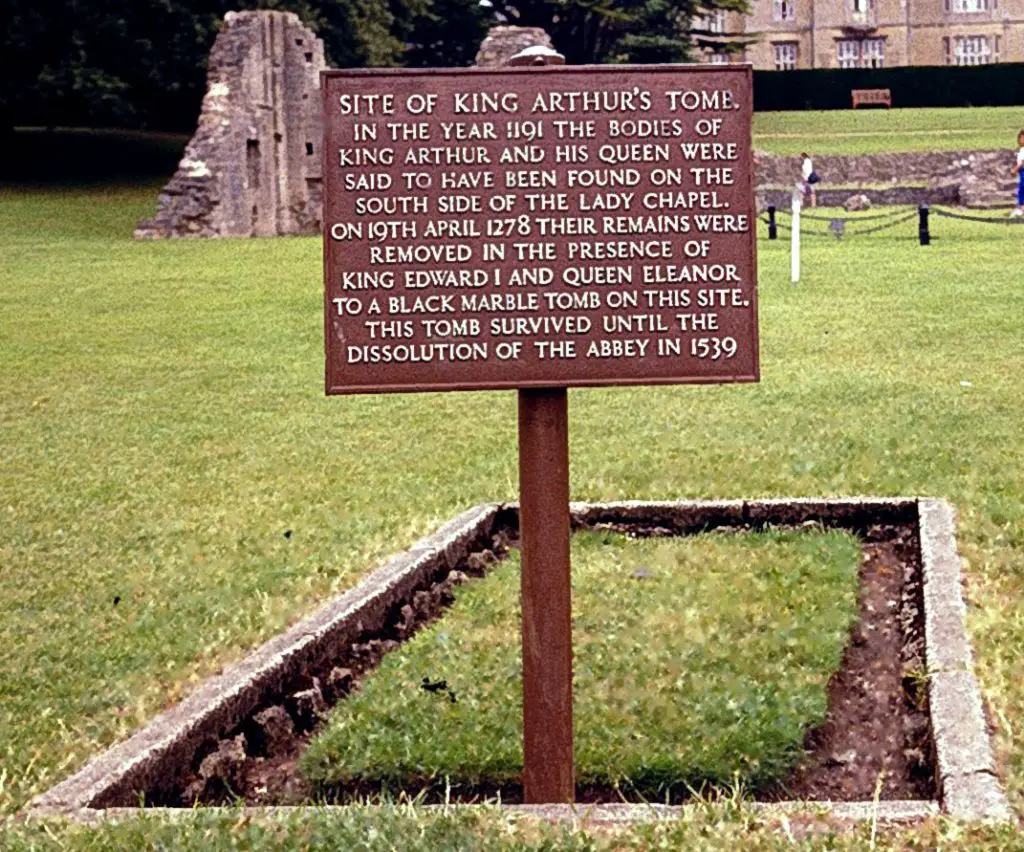
Glastonbury is a town in Somerset, south west England. This is the most popular site for Arthur’s grave.
Not many early sources place Arthur’s home in Somerset specifically, but this fits the general region in which Arthur is placed. There is also at least one record (the 12th century Life of St Gildas) which does record Arthur as fighting in ‘Glastonia’.
But beyond Arthur simply being active in this general area, there is another reason why many people believe that he was buried here.
THE ‘DISCOVERY’ OF ARTHUR’S GRAVE
The key reason is that monks at Glastonbury in the 12th century claimed to have uncovered his grave. They supposedly stumbled upon a large coffin with the bones of a man and a woman inside.
There was also a lead cross with an inscription stating clearly that this was the grave of Arthur and his wife Guinevere.
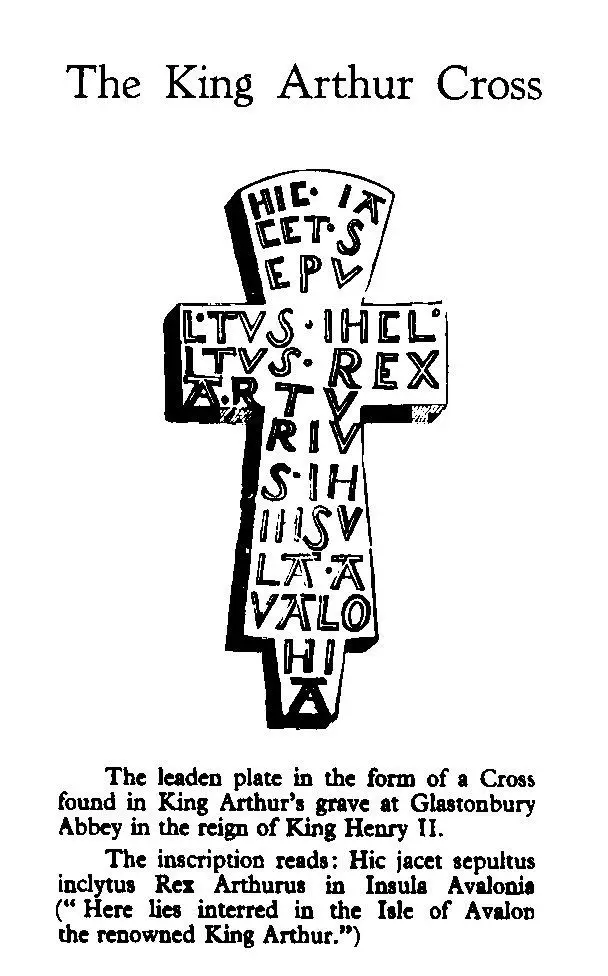
Since that time, Glastonbury has been famously associated with the grave of Arthur. An entire tourist industry still exists today based on that belief.
SUPPORT FROM THE ARTHURIAN LEGENDS
Another reason why people believe that Arthur was buried at Glastonbury is that it seems to tie in with certain Arthurian legends that were written before the ‘discovery’ of his grave there.
The main legend that people point to for support is found in the 12th century Historia Regum Britanniae, written by Geoffrey of Monmouth.
This book describes how Arthur was mortally wounded at his final battle, the Battle of Camlann. He was then taken away on a boat to the mysterious Isle of Avalon, never to be seen again. It might seem logical, then, to conclude that he was buried at Avalon, wherever that was.
The monks of Glastonbury claimed (and this was also written on the lead cross) that Glastonbury itself was the Isle of Avalon. At this point, you may be thinking: ‘But Glastonbury isn’t an island!’
That is true. However, in Arthur’s time, Glastonbury was surrounded by miles of marshland. It essentially was an island, just not out in the open sea.
PROBLEMS WITH THIS THEORY
There are two key problems with the theory that Arthur was buried at Glastonbury.
The first problem is the convenient timing of the discovery of Arthur’s supposed grave. The monastery of Glastonbury had been undergoing financial hardship just before this discovery. In fact, the monastery had even burnt down. The monks were in desperate need of financial aid.
Today, scholars generally believe that the monks faked this ‘discovery’ specifically to increase visitors to the area. It was clearly an effective idea, given the tourist industry that exists there now based entirely on their claim.
The second major problem is the anachronistic form of Latin on the lead cross. Lots of Latin inscriptions from Arthur’s time have been discovered, so it is known with certainty that the writing on the lead cross does not match the Latin writing used in the sixth century.
Based on these two reasons, it is widely believed that this ‘discovery’ is nothing more than a medieval fake.
2. BASCHURCH
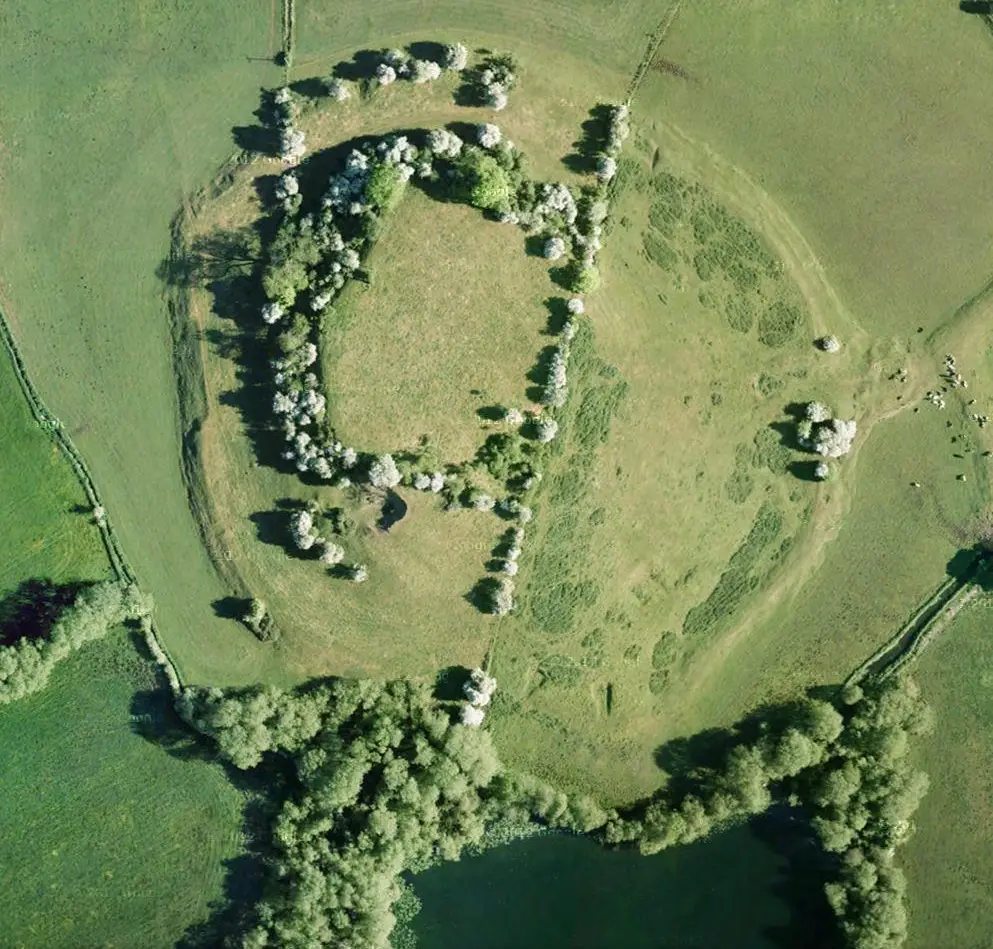
This second theory is a much more modern one. It proposes that Arthur is buried on the outskirts of a town called Baschurch, in Shropshire. His grave is supposedly at an Iron Age earthworks called the Berth.
WHAT IS THE BASIS FOR THIS THEORY?
The fundamental basis for this theory is the suggestion that Arthur himself can be identified with a historical king of the sixth century named Owain Danwyn (commonly spelt ‘Ddantgwyn’ by advocates of this theory).
Supposedly, Owain Danwyn was a king of the kingdom of Powys. A medieval Welsh poem called Eglwyssau Bassa appears to suggest that the kings of Powys were buried in the ‘Churches of Bassa’, which is generally identified with Baschurch in Shropshire.
Logically then, if Arthur was Owain, a king of Powys, and if the kings of Powys were buried at Baschurch, then Arthur too must have been buried at Baschurch. That is the basic logic of the theory, and on the surface it seems to make sense.
SUPPORTING EVIDENCE
Beyond this basic premise, the advocates of this theory have pointed to several bits of supporting evidence for their location.
One piece of evidence is a local legend which says that a prince and his men were buried at the Berth (on the outskirts of Baschurch). This is similar to the tradition of Arthur being buried with his men.
Additionally, there is a place called ‘Birch Grove’ at the Berth. The reason this is significant is that ‘birch’ is the meaning of the name ‘Bedivere’. This was the name of one of Arthur’s knights.
Bedivere was said to have taken up residence at the site of Arthur’s grave. Therefore, the advocates of this theory argue that ‘Birch Grove’ could be a recollection of Bedivere’s presence here.
A third piece of supporting evidence is the fact that the Berth used to be surrounded by water, making it effectively an island. Just like with Glastonbury, this fact is used to argue that it could have been the original Isle of Avalon.
PROBLEMS WITH THIS THEORY
Although this theory seems to have more support than the Glastonbury theory, there are some fundamental issues with it.
Firstly, even if Arthur really can be identified as Owain Danwyn, the claim that Owain was a king of Powys is not supported by the evidence. All the available medieval records about him make him a king of Rhos, not Powys.
Therefore, even if all of the kings of Powys really were buried at Baschurch, this would have nothing to do with Owain. This fact alone renders the theory baseless.
The local tradition about a prince being buried at the Berth with his men is not that significant in view of the very fact that at least some kings of Powys were buried at Baschurch. The local legend could be about any one of those kings rather than Arthur.
The argument that ‘Birch Grove’ points towards a tradition that Bedivere used to reside there is severely weakened by the fact that it is, in fact, just a grove of birch trees, so of course it has that name.
The connection between the Berth and the Isle of Avalon is also not convincing. The Berth was simply in the middle of a sizable lake, rather than being in the middle of miles of open water or marshland.
This does not match the legend of Arthur being taken away on a long journey in a boat, as implied by the Historia Regum Britanniae and confirmed by Geoffrey of Monmouth’s other work, the Vita Merlini.
3. MYNYDD Y GAER
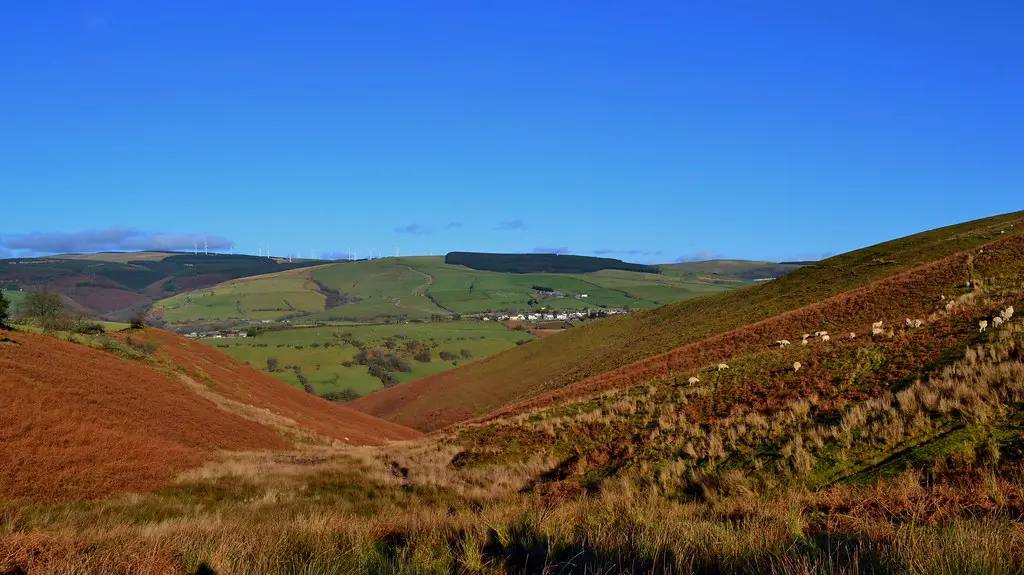
Another modern theory about Arthur’s grave places it on Mynydd y Gaer in Glamorgan, south Wales.
The advocates of this theory originally claimed that Arthur was buried under the ruins of St Peter’s Church on this mountain, but more recently they have argued that it is on the side of a nearby pass, where there are some more ruins which they argue could have originally been a church.
WHAT IS THE BASIS FOR THIS THEORY?
One of the bases for this theory is that the site arguably fits the description of where Arthur was buried in certain medieval tales.
In The High History of the Holy Grail, Arthur is said to have been buried on the top of a mountain from which a stream flowed. In the area were several hermitages, as well as a ‘chapel’ where a hermit lived. Arthur was said to have been buried underneath this chapel.
The famous Le Morte d’Arthur also describes Arthur as being buried underneath a chapel, but this source describes the chapel as being located between two cliffs. On the other side of the cliff was a hermitage.
If we combine the information from these sources, then Arthur’s grave would be on a mountain with a stream flowing down it and with several hermitages in the area, one of which was between two cliffs on top of the mountain.
The grave itself would be underneath a chapel that was also between the two cliffs.
On Mynydd y Gaer, which does have a stream flowing down it, there are various scant remains of structures, many of which could have been hermitages. An excavation at St Peter’s Church itself found that it was formerly the site of a beehive-shaped hermitage.
Nearby is a short pass, which could arguably be the origin of the ‘two cliffs’ mentioned in Le Morte d’Arthur. On one side of the pass is a small circular structure which could potentially have been a hermitage.
On the other side of the pass are the ruins of a small rectangular building oriented exactly east-to-west, about the same shape and size as the nearby St Peter’s Church. This is supposedly the chapel under which Arthur is buried, according to the advocates of this theory.
SUPPORTING EVIDENCE FOR THIS THEORY
One piece of supporting evidence for this theory is that the pass itself is allegedly known locally as ‘the Pass of the Soldier’. Arthur is called ‘the Soldier’ in one of the earliest records about him, the Wonders of Britain.
Another piece of supporting evidence is the name of the nearby church. In English it is ‘St Peter’s Church’, but in Welsh it is known as ‘Llanbedr’. While ‘bedr’ does translate to ‘Peter’, it has been argued that this is a corruption of ‘Bedwyr’, which is the Welsh version of the name ‘Bedivere’.
Since Bedivere is supposed to have taken up residence as a hermit near Arthur’s grave, this could be significant.
PROBLEMS WITH THIS THEORY
The main problem with this theory is that it relies primarily on late evidence for the descriptions of Arthur’s burial site.
The High History of the Holy Grail was written in the 13th century, and Le Morte d’Arthur was written even later, in the 15th century.
Therefore, using these sources as the basis for any theory about what really occurred in sixth century Britain is obviously a risky idea, and many scholars reject the information in them as completely unreliable.
CONCLUSION
In conclusion, we can see that there are several different theories about where Arthur was buried, although none of them have any strong academic support.
The Glastonbury theory is by far the most popular, but scholars today widely agree that the ‘discovery’ of Arthur’s grave there was faked by the monks to draw more visitors to the site, due to their recent financial hardships.
The Baschurch theory is fundamentally based on the idea that Arthur was Owain Danwyn and that Owain was a king of Powys. However, it is universally agreed by scholars that Owain was a king of Rhos, not Powys, which undermines this entire theory.
The supposed connection between the Berth and the Isle of Avalon is also not convincing.
The Mynydd y Gaer theory is another modern attempt to identify Arthur’s grave. It does seem to match very well with the description of Arthur’s gravesite as provided by some of the medieval tales.
However, since those sources are relatively late, their reliability is far from certain.
The only way this issue could be truly settled is if a memorial stone to Arthur is discovered. Perhaps, one day, that will happen.
Arthurian Bibliography
- Norris Lacy, Geoffrey Ashe, Debra Mancoff – The Arthurian Handbook (Second Edition)
- Alan Lupack – The Oxford Guide to Arthurian Literature and Legend
- Ronan Coghlan – The Illustrated Encyclopaedia of Arthurian Legends
- Anonymous – Lancelot-Grail, the French Vulgate
- Sir Thomas Malory – Le Morte d’Arthur
See also my ever-expanding list of primary and secondary sources.

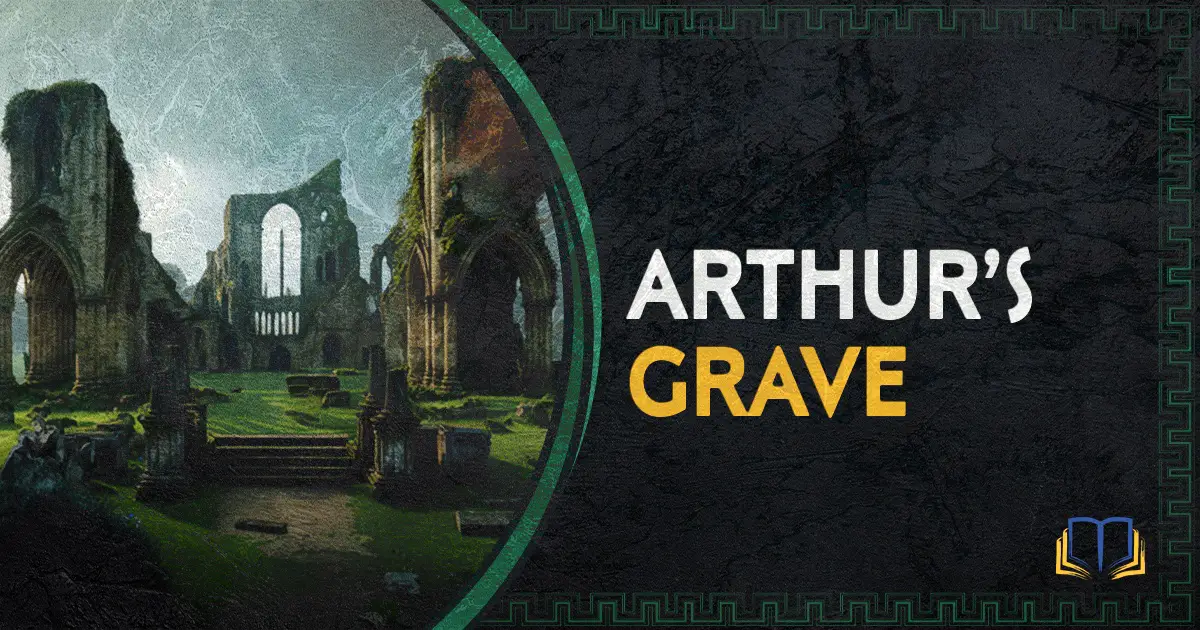


Apart from Glastonbury, have the other locations been excavated?